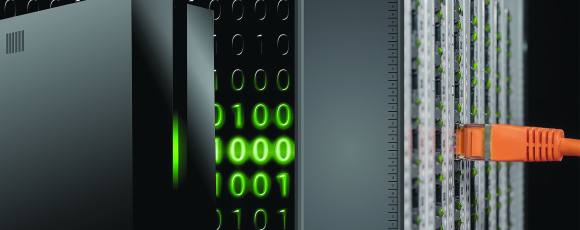
Safe data centres, the indispensable backbone of today’s highly engineered society, are key for connectivity and need to be designed, implemented and operated in such a way that a high level of availability can be guaranteed. For maximum protection, a comprehensive fire safety system is needed to ensure business continuity, personal safety and damage mitigation in case of fire.
The face of fire suppression has changed substantially over the last couple of decades and managers must consider a range of different factors when it comes to their data centre fire suppression systems.
The primary fire protection systems used within data centres typically include wet-pipe sprinklers, pre-action sprinklers, and special suppression (i.e., clean agent, inert gas, or mist). Suppression systems need to consider higher-challenge areas such as automated information storage systems units and tape libraries.
“In a data centre environment where valuable data integrity and expensive equipment damage is an important factor, inert gas and halocarbons are a highly effective and viable fire suppression system,” says Andrew Worthington, general manager, Fidelity Fire Solutions, a division of Fidelity Services Group.
He says these have largely replaced halon and HFCs which previously were the agent of choice for many suppliers. “While halons are excellent fire suppressants, they unfortunately contribute significantly to stratospheric ozone depletion and have subsequently been phased out of production in most developed countries due to an international consensus to regulate the use of ozone-depleting substances through the Montreal Protocol and global regulatory authorities.”
Worthington says in order to satisfy the need of finding suitable fire suppression systems to replace halon, several fire suppression systems have been developed recently or gained renewed interest. “The bulk of the attention has fallen on inert and halocarbon gaseous agents, water mist systems, compressed-air-foam systems, and solid gas and aerosol generators.”
He says these alternative suppression systems or clean agents are now the most common non water-based protection systems in data centres today. “These gaseous agents actuate early in a fire scenario to protect the data and IT equipment.”

Gas extinguishing systems
Worthington says inert gas agents such as nitrogen, argon and helium extinguish the fire by oxygen depletion and are clean and naturally occurring gases that have no global warming potential. “Also, inert gases are not subject to thermal decomposition when used in extinguishing fires, and hence form no combustion by-products. Many of these gases also induce a higher breathing rate, which enables people to continue to function unimpaired by effects of oxygen depletion for short periods, allowing for a safer evacuation.”
Halocarbon agents, which are chemicals similar to halon with molecular structures modified to reduce or eliminate the chlorine and bromine atoms (which are responsible for ozone depletion) are also utilised. Worthington says halocarbon agents extinguish fires primarily by cooling; however, many halocarbons can have toxicological effects on humans and animals, and therefore should be a consideration when investigating the purpose and location of these systems as they are often highly pressurised and may impact the size and weight as well as layout and construction of the data centre.
“There are a wide variety of approaches to addressing issues of capacity, resiliency, cost, and schedule in data centres. Careful design that accounts for the range of possible fire scenarios allows the fire detection and suppression systems to meet reliability and business continuity goals and objectives. Commissioning is important, as designs can work well on paper but need to be properly implemented to meet the protection goals,” notes Worthington.
Fidelity Fire Solutions has experience designing, installing and maintaining these systems and will be able to provide customers with a comprehensive risk analysis and fit-for-purpose solutions to suit the exact specifications of the customer’s data centre. “Fire safety is a long-term investment that must be carefully planned to minimise any operational interruptions, to ensure the business continuity and ultimately to properly protect both people and property,” concludes Worthington.
For more information contact Fidelity-ADT, +27 11 697 7271, [email protected], www.adt.co.za

© Technews Publishing (Pty) Ltd. | All Rights Reserved.